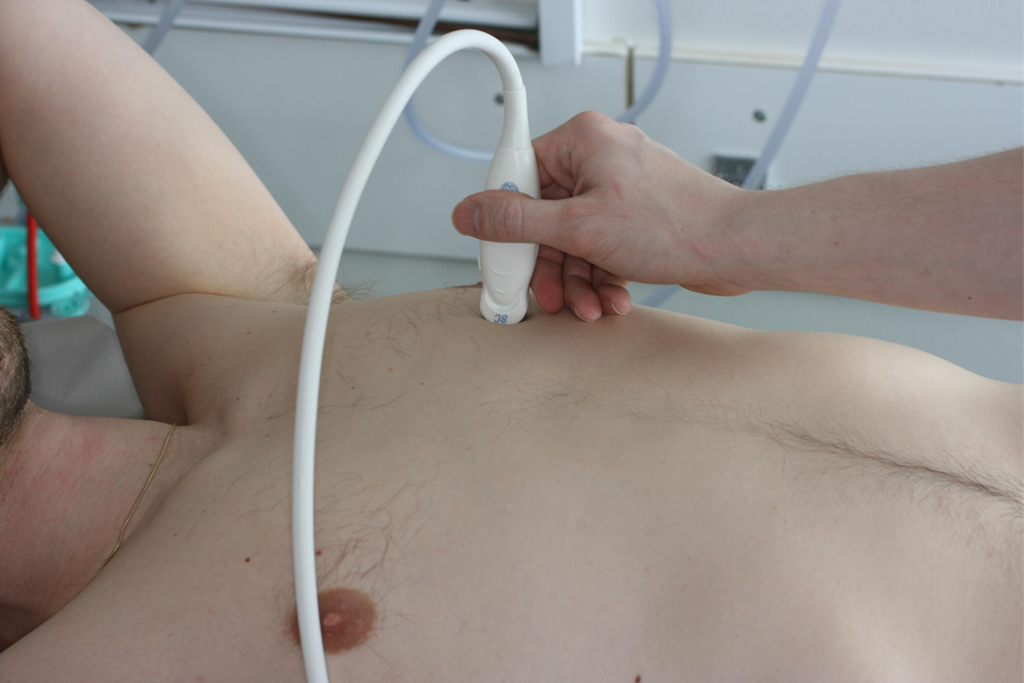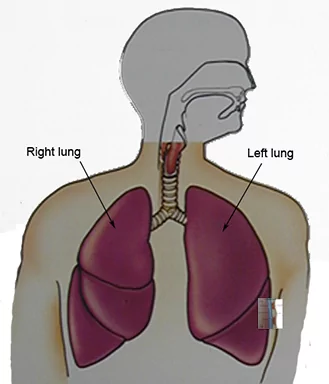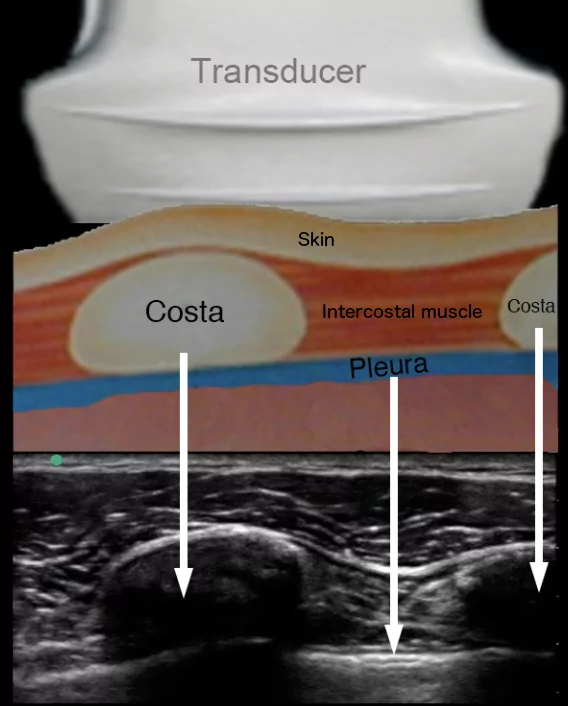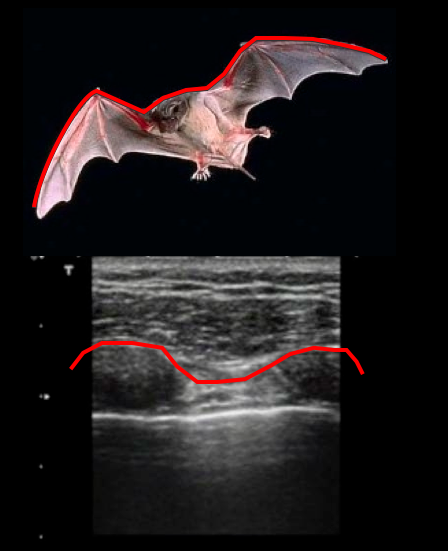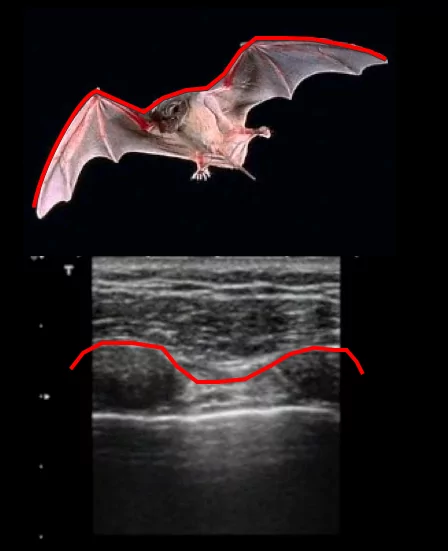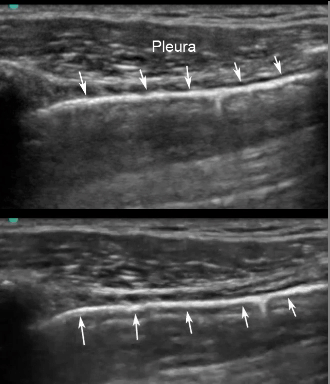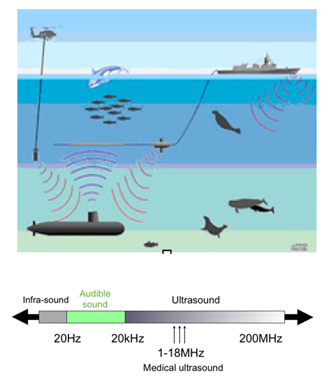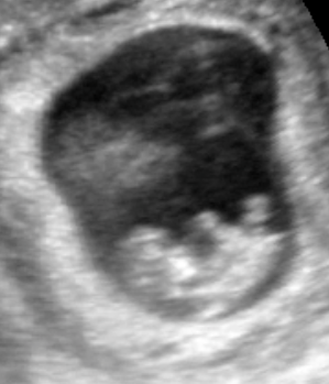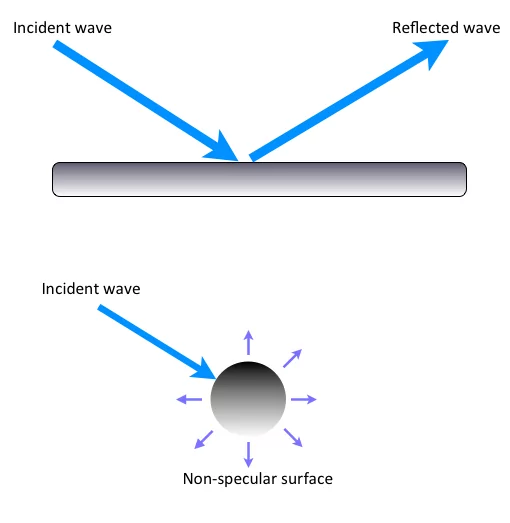Bodytext1
Examination of the pleural sinus is performed in order to exclude or confirm the presence of pleural effusion
The examination involves three steps:
1. Find the abdominal reference point – liver on the right side and spleen on the left side
2. Move the transducer cranially and identify the diaphragm and the tip of the lung
3. Check for presence of hypoechoic (black) areas present between the diaphragm and visceral pleura or between the parietal and visceral pleural sheets
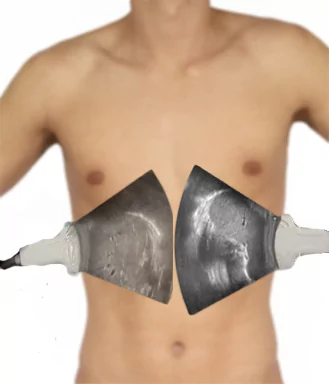
Fact text: The image depicts the typical transducer positions when assessing the sinus

